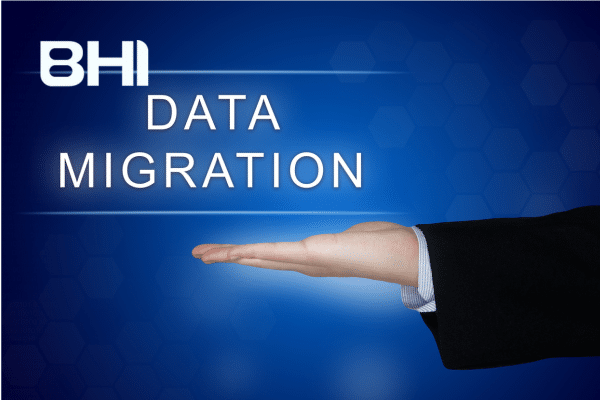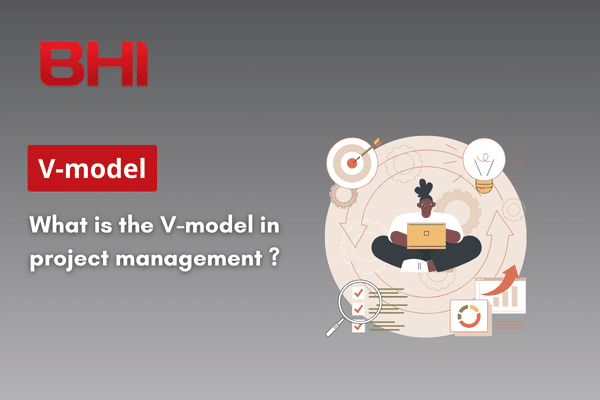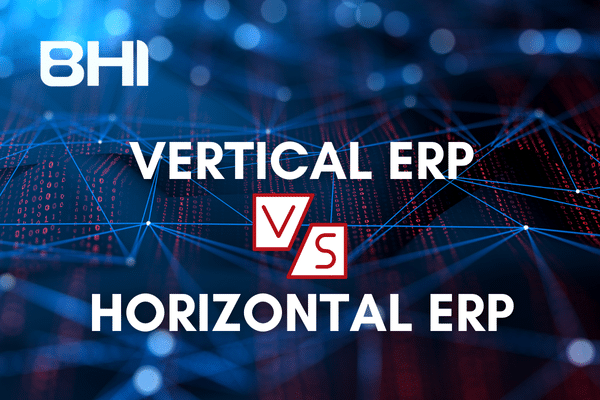Data migration represents one of the most critical and risky IT projects an enterprise can undertake. Whether modernizing an ERP system, merging databases after an acquisition, or migrating to the cloud, the success of this operation determines the operational continuity and future performance of the organization. Understanding the challenges, mastering methodologies, and anticipating pitfalls becomes essential for any IT manager facing this challenge.
What is Data Migration ?
Data migration refers to the process of transferring data from a source system to a target system, typically involving a change in technology, format, or structure. This complex operation goes well beyond a simple copy-paste: it requires a profound transformation of data to ensure its integrity, consistency, and usability in the new environment.
Companies that successfully complete their data migration see immediate and lasting benefits. According to an Invenis study, 83% of migration projects encounter difficulties related to data quality, but adopting a rigorous methodology significantly reduces the risk of failure. This statistic underscores the crucial importance of thorough preparation and methodical execution.
The decision to migrate data typically responds to strategic imperatives: technological obsolescence threatening business continuity, consolidation of disparate systems creating inefficiencies, cloud adoption to gain agility, or regulatory compliance. Faced with these challenges, data migration becomes a necessary step to maintain competitiveness and ensure enterprise sustainability.
Essential Phases of a Successful Migration
Phase 1 : In-Depth Analysis and Planning
The success of a data migration relies on comprehensive understanding of the existing environment. This initial phase, which can represent up to 40% of total project time, establishes the foundation for the entire operation. Detailed inventory of source data often reveals surprises: orphaned data, massive duplicates, obsolete formats, or inconsistent structures accumulated over the years.
Analysis of the application ecosystem identifies all dependencies and interconnections. A seemingly isolated database may actually feed dozens of applications, reports, and automated processes. Each connection must be documented, evaluated, and planned in the migration. This exhaustive mapping prevents service disruptions and post-migration functionality losses.
Defining objectives and success criteria guides the entire project. Beyond simple technical transfer, migration must meet specific business objectives: performance improvement, cost reduction, regulatory compliance, or enabling new capabilities. These objectives determine technical choices, migration scope, and necessary investments.
Phase 2 : Data Preparation and Cleansing
Source data quality directly conditions migration success. Organizations that adopt a structured approach typically see significant reductions in costs and downtime during data migrations.
Data profiling uses specialized tools to automatically analyze data quality and structure. This analysis reveals patterns, anomalies, and statistical distributions, identifying problematic areas requiring special attention. Validation rules defined during this phase serve as reference throughout the migration.
Data standardization and enrichment transform raw data into exploitable information. Formats are harmonized, codes normalized, references consolidated. This phase offers a unique opportunity to improve the overall quality of the enterprise’s data assets, creating value beyond simple technical transfer.
Phase 3 : Migration Architecture Design
Migration architecture determines how data will travel from source to target system. Approaches vary according to constraints: “Big Bang” migration during a weekend to minimize interruption, progressive batch migration to reduce risks, or bidirectional synchronization for temporary coexistence of both systems.
Transformation rules precisely define how each data element will be converted, mapped, and validated. These complex rules handle format changes, unit conversions, aggregations, and deduplications. Exhaustive documentation of these rules facilitates traceability and debugging in case of problems.
Rollback strategy prepares for reversal scenarios in case of major issues. This emergency planning defines points of no return, backup procedures, and criteria triggering rollback. Paradoxically, a well-designed rollback strategy reduces the risk of having to use it by forcing thorough reflection on risks.
Technical Challenges and Their Resolution
Managing Volume and Performance
Data migrations often confront teams with volumes exceeding their previous experiences. Transferring terabytes of data within limited maintenance windows requires extensive optimization. Parallelization, compression, and incremental transfer techniques significantly accelerate operations.
Impact on production systems must be carefully controlled. Overly aggressive extraction can slow current operations, creating performance problems for users. Off-hours extraction strategies, use of dedicated replicas, or Change Data Capture techniques minimize these impacts.
Real-time monitoring becomes crucial for large-scale migrations. Detailed dashboards track progress, transfer rates, errors, and system performance. This visibility allows dynamic parameter adjustment and problem anticipation before they become critical.
Maintaining Integrity and Consistency
Referential integrity represents a major challenge when transferring complex relational databases. Foreign keys, constraints, and triggers must be managed in the correct order to avoid constraint violations. A dependency graph-based loading strategy ensures respect for these relationships.
Transactional consistency requires special attention for systems that must remain operational during migration. Replication, logging, and reconciliation techniques capture changes occurring during transfer. This continuous synchronization ensures no transaction is lost during transition.
Continuous validation throughout the process quickly detects anomalies. Automated checks compare record counts, control totals, and data samples between source and target. This multilayer validation ensures data arrives complete and intact at destination.
Human and Organizational Factors
Change Management and Communication
Data migration profoundly impacts business users accustomed to their tools and processes. Transparent communication about objectives, timeline, and expected impacts reduces anxiety and promotes buy-in. Key users become change ambassadors when involved from upstream phases.
Anticipatory training prepares teams for new systems and processes. Beyond simple technical usage, training must cover workflow changes, new features, and best practices. A staggered training program allows progressive skill development without cognitive overload.
Reinforced support during the transition period reassures users and accelerates problem resolution. A dedicated crisis unit, direct communication channels, and accessible documentation effectively manage the inevitable difficulties of the first post-migration days.
Project Team Constitution and Management
An effective migration team combines sharp technical skills with deep business knowledge. Data experts master source and target technologies, while business analysts understand data meaning and usage. This complementarity ensures informed decisions at each stage.
Project governance establishes decision, escalation, and validation processes. A steering committee bringing together IT and business arbitrates conflicts, validates major deliverables, and adjusts trajectory according to emerging constraints. This strong governance maintains alignment between technical objectives and business needs.
Risk management anticipates and mitigates potential problems. A regularly updated risk register identifies threats, evaluates their probability and impact, and defines preventive actions. This proactive approach transforms surprises into managed events.
Best Practices and Lessons Learned
Comprehensive Testing Strategies
Testing represents the safety net for any data migration. A multilevel testing strategy progressively validates each component then the entire system. Unit tests verify individual transformation rules, integration tests validate complete flows, and acceptance tests confirm business needs satisfaction.
Realistic test environments faithfully reproduce production complexity. Using anonymized but representative data detects volume, performance, and quality problems before actual migration. These dress rehearsals drastically reduce surprises on D-day.
Business user validation brings an irreplaceable perspective. Their intimate data knowledge detects subtle anomalies escaping automated controls. This human validation, though time-consuming, constitutes the last line of defense against migration errors.
Documentation and Traceability
Exhaustive documentation facilitates future maintenance and knowledge transfer. Each decision, transformation, and exception must be documented with its context and justification. This project memory becomes valuable for future evolutions and audits.
End-to-end traceability allows tracking each piece of data from source to final destination. Detailed logs, reconciliation reports, and audit trails create a clear chain of responsibility. This transparency reassures regulators and facilitates diagnosis in case of problems.
Lessons learned capitalize on experiences for future projects. Successes, failures, and surprises are objectively analyzed to enrich methodologies. This continuous improvement transforms each migration into an investment for the future.
Conclusion and Perspectives
Data migration transcends the simple technical challenge to become a true organizational transformation project. Companies approaching this adventure with method, rigor, and anticipation maximize their chances of success while minimizing operational risks. Statistics demonstrate that organizations following a structured approach reduce their migration costs by 30% and downtime by 50%.
Technological evolution opens new perspectives to simplify and accelerate future migrations. Artificial intelligence begins to automate data discovery and mapping. Cloud-native migration tools reduce technical complexity. Low-code platforms democratize transformation pipeline creation. These innovations converge to make migrations more accessible and less risky.
Companies that master the art of data migration gain a sustainable competitive advantage. The ability to evolve quickly, integrate new systems, and exploit new technologies becomes a differentiating factor in the digital economy. Each successful migration reinforces this organizational agility, transforming a one-time project into a lasting strategic capability.
Ready to Secure Your Data Migration Project ?
Have you already experienced a data migration in your company ? We’d love to hear about your experience! What were your main challenges? How did you manage resistance to change? What lessons did you learn? Your insights can help other organizations avoid common pitfalls and maximize their chances of success.
For in-depth expertise and personalized support in your migration project, discover how we can secure your digital transformation and help you transfer your data risk-free. Our team of experts guides you through every step from initial analysis to post-migration support, including data cleansing and business validation. Contact us to transform this technical challenge into a strategic opportunity for your organization.

















